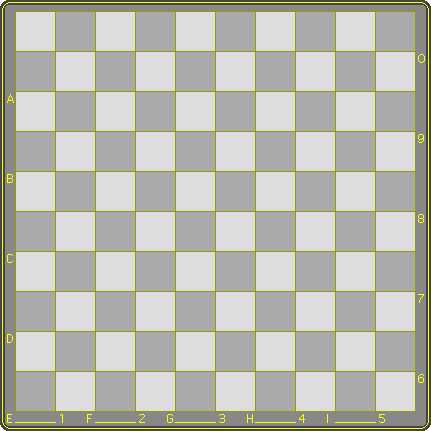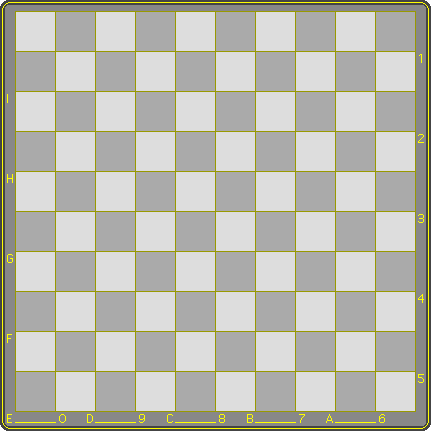Page 1 of 4
|
International Draughts has been the most important draughts variant for two and a half centuries. Its body of theory has grown far beyond a mere 'impressive'. Its strategical concepts are constantly being refined by the very few that understand them in deep, and reviewed by thousands who are qualified to understand but lack the ability to break new ground. Its tactics are beyond question, if not beyond belief. In this essay it will be the standard against which all other variants are measured. The authors are not among those qualified to understand the current state of strategical development, let alone comment on it. We can only give examples of how the fabulous combinatorial power of the game is a reflection of a fabulous combination of rules. So we will comment on the rules while giving them, and show alternatives in other games, and the different consequences to which they lead. We hope to show that the framework of International Draughts best suits the spirit of Draughts in a general sense. We can not, however, ignore the fact that the game itself is in danger of becoming a marginalized and localized affair, outside the spotlight of international sport, due to an inherent flaw that was very slow to surface, but is very hard to eradicate now that it has. Play Draughts interactively or against an AI |
 | Rules The diagram shows the board and the pieces in initial position. There are two players, black and white. White begins. Players move - and must move - in turn. Object If a player has no legal move he loses the game. This may come about either by being eliminated or being blocked completely. Draws may occur by mutual agreement or 3-fold. Movement Capture has precedence over a non-capturing move. If the player to move has no capture to make, he has the following options:
A king is a promoted man. |
A man moves one square diagonally forwards, provided the target square is vacant. If a man ends its move on the back rank, it promotes to king. A king moves any distance of free squares along an open diagonal.
Capture
Capture is compulsory. The direction of capture may be both forwards and backwards.
- If a man is on a particular line, and next to it on that line is a square occupied by an opponent's piece, then the man captures the piece by jumping over it to the square immediately beyond, which must be vacant for the capture to take place. If the man can proceed in a similar way in the same or a perpendicular direction, it must do so, taking care beforehand to establish the route that brings the maximum number of captured pieces. A captured king counts as one piece.
If there's more than one way to meet this criterion, the player is free to choose. - During a multiple capture, a square may be visited more than once, but a piece may not be jumped more than once.
- A multiple capture must be completed before the captured pieces are removed from the board.
- If a man in the course of a capture visits a square of the back rank without ending its move there, it does not promote.
- A king looks along open lines. If it sees, at any distance, an opponent's piece and immediately beyond one or more subsequent vacant squares, it captures by jumping the piece and landing on one of these squares.
A king is subject to the same rules regarding majority capture: if it can proceed in the same or a perpendicular direction it must do so, and it must likewise take the route that brings maximum number of captured pieces.
Note: the expression "... it captures by jumping the piece and landing on one of these squares", does not necessarily imply choice. In fact, during the capture the king will usually have no choice because it is subject to majority capture. After jumping the last piece it may choose to land on any of the subsequent vacant squares.
Comments
|
(1) The precedence of majority capture is the basis for a class of combinations that include stickers: pieces moved to a square where they are exposed to capture, yet cannot be captured because the opponent must make a majority capture elsewhere. Of course we'll combine the fabulous with the instructive: there are two successive stickers in this combination. |
||||||
|
Abolishing the precedence of majority capture means giving up all combinations based on it, not just the sticker based ones. It means giving up a measure of control. A different measure of control means a different strategy. We'd like to argue that this simple rule, just counting the number of pieces and making all pieces equal in this respect, has historically proven to provide precisely the right balance to allow weaving an ever more refined strategy around almost unlimited tactical possibilities.
Rules should be efficient, meaning that the desired effect should be achieved with minimal means. Precedence of majority capture puts a great measure of control into a few words. Whether this effect is 'desired' is a different matter. The russian 8x8 variant Shashki, among others, does not require majority capture to precede. That obviously gives more choice to the opponent and thus less control. It excludes a whole class of tactics in favor of the ensuing emphasis on positional reflections. More of a pastime, less of a weapon. |






